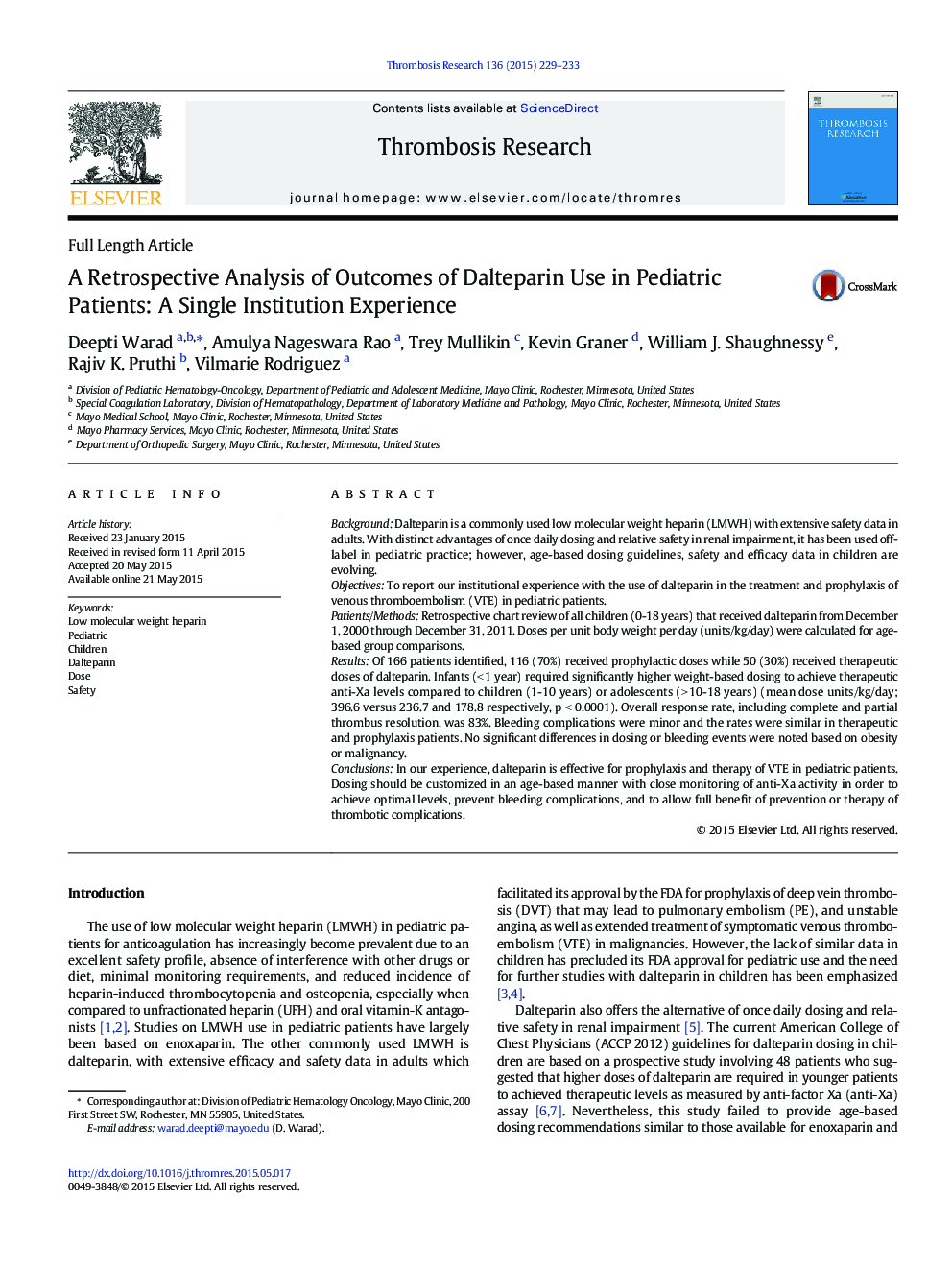| Article ID | Journal | Published Year | Pages | File Type |
|---|---|---|---|---|
| 6001285 | Thrombosis Research | 2015 | 5 Pages |
â¢Retrospective review of dalteparin use in pediatric venous thrombosis managementâ¢No new thrombotic events were noted in prophylactic and therapeutic groupsâ¢In the therapeutic group, 83% patients had objective thrombus resolutionâ¢Infants required higher therapeutic weight based dosing compared to older childrenâ¢No major bleeding events were noted in either prophylactic or therapeutic group
BackgroundDalteparin is a commonly used low molecular weight heparin (LMWH) with extensive safety data in adults. With distinct advantages of once daily dosing and relative safety in renal impairment, it has been used off-label in pediatric practice; however, age-based dosing guidelines, safety and efficacy data in children are evolving.ObjectivesTo report our institutional experience with the use of dalteparin in the treatment and prophylaxis of venous thromboembolism (VTE) in pediatric patients.Patients/MethodsRetrospective chart review of all children (0-18 years) that received dalteparin from December 1, 2000 through December 31, 2011. Doses per unit body weight per day (units/kg/day) were calculated for age-based group comparisons.ResultsOf 166 patients identified, 116 (70%) received prophylactic doses while 50 (30%) received therapeutic doses of dalteparin. Infants (< 1 year) required significantly higher weight-based dosing to achieve therapeutic anti-Xa levels compared to children (1-10 years) or adolescents (> 10-18 years) (mean dose units/kg/day; 396.6 versus 236.7 and 178.8 respectively, p < 0.0001). Overall response rate, including complete and partial thrombus resolution, was 83%. Bleeding complications were minor and the rates were similar in therapeutic and prophylaxis patients. No significant differences in dosing or bleeding events were noted based on obesity or malignancy.ConclusionsIn our experience, dalteparin is effective for prophylaxis and therapy of VTE in pediatric patients. Dosing should be customized in an age-based manner with close monitoring of anti-Xa activity in order to achieve optimal levels, prevent bleeding complications, and to allow full benefit of prevention or therapy of thrombotic complications.
